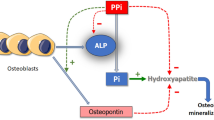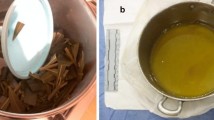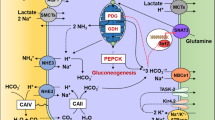Summary
Blood and tissue levels of α-acetyldigoxine were investigated in mongrel dogs at different intervals following the intravenous administration of 0.4 mg/kg of the glycoside, using a chromatographic separation and a fluorometric determination method. The following results were obtained:
-
1.
During the phase of distribution (up to 5 min post. inj.) a blood elimination rate with a half-life of 105 sec was observed.
-
2.
In organs with a high blood flow rate the following maxima of tissue glycoside levels were reached 5–10 min after the administration of α-acetyldigoxine: kidney (2.98), adrenal (1.31), heart (1.02), liver (0.76) and skeletal muscle (0,59 μg/g). In adipose tissue, maximal tissue levels were reached significantly later (approximately 30 min after the inj.).
-
3.
Following the phase of distribution an exponential decline of the glycoside tissue levels was observed in all organs with marked differences in rate and half-life between the different organs. Especially the difference between half-live values of heart (75 min) and adipose tissue (167 min) indicated a redistribution from organs with a high blood flow to organs with a high lipid content.
-
4.
Within the first two hours α-acetyldigoxine was excreted mainly by the kidneys. The average recovery for this period was 5% of the administered dose.
In all animals the i.v. administration of 0.4 mg/kg α-acetyldigoxine leads to increasing toxic alterations of the ECG even during the period of decreasing cardiac glycoside levels. Most animals died 1–2 hours post inj. from ventricular fibrillation.
Zusammenfassung
α-Acetyldigoxin wurde an Hunden in einer Dosis von 0,4 mg/kg i.v. verabreicht und die Blut- und Gewebsspiegel zu verschiedenen Zeitpunkten nach der Injektion mittels chromatographischer Auftrennung und nachfolgender fluorometrischer Messung bestimmt. Es wurden die folgenden Ergebnisse erhalten.
-
1.
In der Verteilungsphase (bis 5 min post inj.) erfolgte die Elimination aus dem Blut mit einer Halbwertszeit von 105 sec.
-
2.
In den gut durchbluteten Organen wurden 5–10 min nach der Injektion folgende Mittelwerte für die Maximal-Konzentrationen von α-Acetyldigoxin erreicht: Niere (2,98), Nebenniere (1,31), Herz (1,02), Leber (0,76) und Skeletmuskulatur (0,59 μg/g). Im Fettgewebe wurden die Konzentrationsmaxima erst nach 30 min erreicht.
-
3.
In allen untersuchten Organen erfolgte nach Erreichen der Maxima ein exponentieller Abfall der α-Acetyldigoxin-Spiegel, wobei zum Teil stark unterschiedliche Halbwertszeiten bestimmt werden konnten. Extremwerte: Herz (75 min), Fettgewebe (167 min). Aus diesen Befunden wurde auf eine Rückverteilung aus den Organen mit hoher Durchblutung in solche mit hohem Lipoidgehalt geschlossen.
-
4.
Innerhalb der ersten beiden Stunden nach der i.v. Zufuhr wurde α-Acetyldigoxin im wesentlichen durch die Niere ausgeschieden, wobei bis zu 5% der verabreichten Dosis wiedergefunden werden konnten.
-
5.
Die Verabreichung von 0,4 mg/kg α-Acetyldigoxin führte bei allen Tieren zu toxischen EKG-Veränderungen, die auch in der Phase des exponentiellen Abfalls der Glykosidkonzentration im Herzen ständig an Schwere und Häufigkeit zunahmen, wobei die meisten Tiere 1–2 Std post inj. durch Kammerflimmern endeten.
Similar content being viewed by others
Literatur
Abel, R. M., R. J. Luchi, W. Peskin, H. L. Conn, and L. D. Miller: Metabolism of Digoxin: Role of the Liver in tritiated Digoxin degradation. J. Pharmacol. exp. Ther. 150, 463–468 (1965).
Bauer, H.: Zur Kenntnis der Ursachen der Kumulierungserscheinungen der Digitalisglycoside. Naunyn-Schmiedebergs Arch. exp. Path. Pharmak. 176, 74–77 (1934).
Benthe, H. F., u. K. Chenpanich: Vergleich der enteralen Wirksamkeit von Digoxin, β-Acetyldigoxin und Digitoxin. Arzneimittel-Forsch. 15, 486–489 (1965).
Bernoulli, M., u. Bernoulli, C., I. Danczkay u. A. Uelinger: α-Acetyldigoxin: Klinische Prüfung unter besonderer Berücksichtigung der Geriatrie. Schweiz. med. Wschr. 97, 83–88 (1967).
Bine, R., M. Friedman, S. O. Byers, and C. Bland: The deposition of digitoxin in the tissues of the rat after parenteral injection. Circulation 4, 105–107 (1951).
Bretschneider, H. J., P. Doering, W. Eger, G. Haberland, K. Kochsiek, H. Merker, F. Scheler u. G. Schulze: Arterielle Konzentration, Arteriovenöse Differenz im Coronarblut und Organverteilung von C14-markierten Lanatosid C nach rascher i.v. Injektion. Naunyn-Schmiedebergs Arch. exp. Path. Pharmak. 244, 117–144 (1962).
Buchtela, K., u. H. Hackl: Arzneimittel-Forsch. (in Vorbereitung).
—— ——: M. Königstein u. J. Schläger: Acetyldigoxin 1 (Enterale Resorption). Wien. med. Wschr. 118, 86–93 (1968).
Büchner, F.: Herzmuskelnekrosen durch hohe Dosen von Digitalisglykosiden. Naunyn-Schmiedebergs Arch. exp. Path. Pharmak. 176, 59–64 (1934).
Burger, H., u. O. Spühler: Acetyldigoxin, ein neues herzaktives Glycosid. Schweiz. med. Wschr. 96, 1389–1395 (1966).
Doherty, J. E., and H. Perkins: Studies with tritiated digoxin in human subjects after i.v. administration. Amer. Heart J. 63, 528–536 (1962).
—— —— Tissue concentration and turnover of tritiated digoxin in dogs. Amer. J. Cardiol. 17, 47–52 (1966).
Friedman, M., S. St. George, R. Bine, S. O. Byers, and C. Bland: Deposition disappearance of digitoxin from the tissues of rat rabbit and dog after parenteral injection. Circulation 6, 367–370 (1952).
George, S. St., R. Bine, M. Friedman, and C. Bland: Renal excretion of digitoxin in the rabbit and dog. Proc. Soc. exp. Biol. (N. Y.) 78, 504–505 (1951).
Gonzalez, L. F., and E. C. Layne: Studies on 3H-labeled digoxin: tissue, blood and urine determinations. J. clin. Invest. 39, 1578–1583 (1960).
Grauwiler, J., W. R. Schalch u. M. Taeschler: Pharmakologische Eigenschaften von Acetyldigoxin-α. Schweiz. med. Wschr. 96, 1381–1388 (1966).
Herrmann, I., u. K. Repke: Entgiftungsgeschwindigkeit und Kumulation von Digitoxin bei verschiedenen Species. Naunyn-Schmiedebergs Arch. exp. Path. Pharmak. 247, 19–34 (1964).
Hueber, E. F.: Über Verwendung von Acetyldigoxin zur Digitalistherapie. Wien. med. Wschr. 117, 713–715 (1967).
Jelliffe, R. W.: An ultramicro fluorescent spray reagent for detection and quantification of cardiotonic steroids on thin-layer chromatograms. J. Chromatogr. 27, 172–179 (1967).
Jensen, K. B.: Fluorometric determination of digitoxignine. Acta pharmacol. (Kbh.) 9, 66–74 (1953).
Marcus, F. I., A. Peterson, A. Salel, J. Soully, and G. Kapadia: The metabolism of tritiated digoxin in renal insufficiency in dogs and man. J. Pharmacol. exp. Ther. 152, 372–382 (1966).
Müller, P. H., u. C. Meier: Klinische Untersuchungen zur Wirkung von α-Acetyldigoxin. Münch. med. Wschr. 3, 159–166 (1968).
Okita, G. T., P. J. Talso, J. H. Curry, F. D. Smith, and E. M. K. Geiling: Metabolic fate of radioactive digitoxin in human subjects. J. Pharmacol. exp. Ther. 115, 371–379 (1955).
Repke, K.: Die chemische Bestimmung von Digitoxin in Geweben und Ausscheidungen. Naunyn-Schmiedebergs Arch. exp. Path. Pharmak. 233, 261–270 (1958).
-- Metabolism of cardiac glycosides. Proceedings of the first international pharmacological meeting, Vol. 3, p. 47 (1963).
——, u. L. Roth: Die Bis- und Mono-digitoxoside des Digitoxigenins und Digoxigenins: Metaboliten. Naunyn-Schmiedebergs Arch. exp. Path. Pharmak. 237, 155–170 (1959).
Rothlin, E., u. R. Bircher: Pharmakodynamische Grundlagen der Therapie mit herzwirksamen Glycosiden. Ergebn. inn. Med. Kinderheilk. 5, 457–552 (1954).
Siedek, H., H. Hammerl u. M. Studlar: Desglukolanatosid C, ein neues Herzglycosid. Wien. klin.Wschr. 79, 700–704 (1967).
Wells, O., B. Katzung, and F. H. Meyers: Spectrofluorometric analysis of cardiotonic steroids. J. Pharm. Pharmacol. 13, 389–395 (1961).
Author information
Authors and Affiliations
Rights and permissions
About this article
Cite this article
Kraupp, O., Raberger, G. & Grossmann, W. Blut- und Gewebsspiegelkurven sowie renale Ausscheidung von α-Acetyldigoxin bei i.v. Darreichung am Hund. Naunyn-Schmiedebergs Arch. Pharmak. u. Exp. Path. 260, 330–341 (1968). https://doi.org/10.1007/BF00537638
Received:
Issue Date:
DOI: https://doi.org/10.1007/BF00537638
Key-Words
- α-Acetyldigoxine
- Glycoside-Distribution and -Redistribution
- Glycoside-Blood Levels and Renal Excretion




